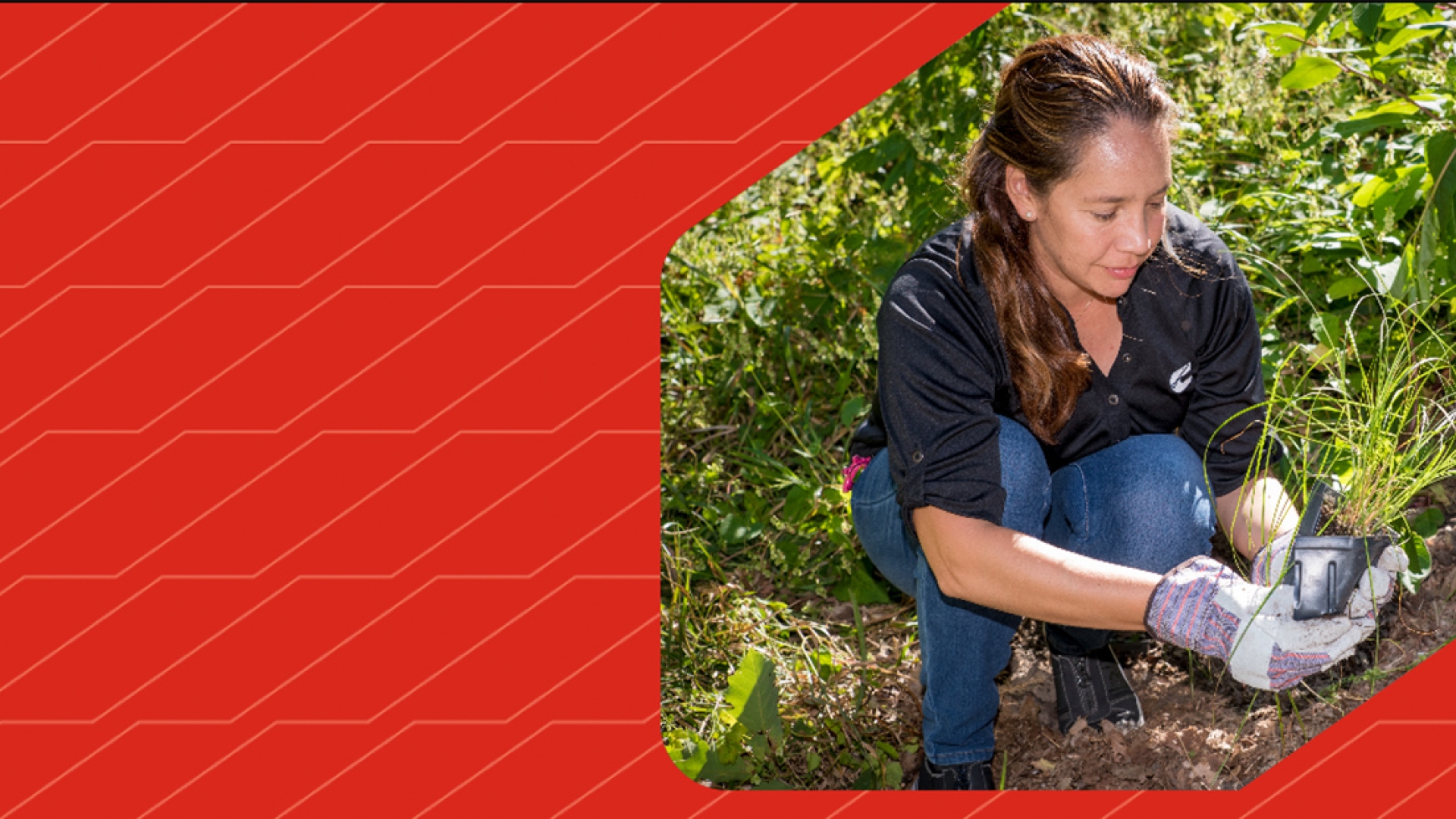Effective corporate responsibility in times of change
By Jim Schacht, Vice President - Corporate Responsibility

We are living in transformational times. All will be affected. It is a business and moral imperative that companies ensure a just transition for all, particularly in the communities where we work and live.
Effective corporate responsibility in times of change requires a flexible community engagement model, one that can both organize a company's resources at scale and adapt to regional differences. Simultaneously, it must understand and address the unique needs of each of its communities.
At Cummins Inc., our approach for this is to think globally, lead regionally and act locally.
Corporate responsibility and climate action
Climate change is the existential threat of our times, and virtually all companies and communities eventually will be impacted. Responsible corporate citizens today must be proactive in determining their role in addressing these effects, where they can have the greatest impact, and how they will focus their resources accordingly.
At Cummins, our Destination Zero strategy is our business growth strategy, leading the industries in which we compete through the transformational changes required for achieving zero-emissions solutions. Our business and moral responsibility is to ensure that all our industries and customers can make the transition towards a healthier planet in the manner that makes the most sense to them.
Similarly, we know the communities in which we work and live also will be impacted by climate change and the transition towards a healthier planet. It is our business and moral responsibility to ensure they can make this transition smoothly and successfully as well.
Aligning community and business strategies for impact
This alignment between our business and community strategy is crucial for success in both areas.
Cummins’ global community engagement focuses on three priorities: education, equity and the environment. These areas are essential to our business strategy and to ensuring a just transition for our communities and community members.
To be successful, Cummins must equip a workforce with the skills of tomorrow, and attract, retain and develop diverse talent to lead through this transition. In our community work, we must do the same. Por ejemplo:
- Our community education strategy supports STEM education from early childhood education to adult learning. This helps prepare our communities and members for well-paying jobs of the future.
- Our community equity strategies address barriers that disproportionately prevent progress and readiness for women and minorities in our communities.
- And in our community environmental work, we focus on initiatives that address the negative effects of climate change related to water, such as floods and droughts, while also aiming to significantly reduce atmospheric carbon.
Maximizing community impact with a flexible engagement model
Think globally, lead regionally, act locally. At Cummins, we achieve this through a three-tiered community engagement model:
- At a global level, our Cummins Inc. CEO serves as chair of The Cummins Foundation Inc., which has its own Board of Directors. The Foundation is led by a company officer and a global team of senior leaders. Here, global community strategies and corporate community giving objectives are determined.
- At the regional level, the most senior Cummins leader in each region manages a Corporate Responsibility council, composed of senior regional leaders. They are responsible for translating global community strategies and corporate giving objectives into regional strategies. They also review and approve employee-submitted grants in their regions to ensure adherence to each regional strategy and to encourage and support employee volunteerism.
- At the local level, Cummins has over 400 Community Involvement Teams in each of its communities around the world. These teams develop local strategies based on their community's unique needs. They engage and develop relationships with nonprofits in the community, apply for grants, and organize volunteer activities. This allows our employees to contribute their time and skills to our nonprofit partners to positively impact each community.
We believe this three-tiered approach enables a flexible community engagement model. It allows us to organize Cummins' resources at scale, adapt to regional differences, and account for the unique needs of each community.
Tailoring corporate responsibility models
Effective corporate responsibility in times of change requires a flexible community engagement model. While our three-tiered approach works well for us, all companies, as responsible corporate citizens, must find their own effective strategy to ensure both business success and a just transition for all.
Author Profiles

Jim Schacht, Vice President - Corporate Responsibility
Jim is Vice President of Cummins Inc.'s Corporate Responsibility function worldwide. In this capacity, he also serves as CEO of The Cummins Foundation Inc. Prior to this, he served as Executive Director of Cummins Community Relations and Corporate Giving for North America. He also was responsible for the design, establishment, and launch of Cummins Water Works, the company's global environmental program focused on strengthening communities through sustainable water. Jim joined Cummins in 2010. During his tenure, he served as Executive Director and General Manager of Cummins' Marine and Oil & Gas market segments globally. Prior to that, he was Executive Director of Cummins Business Services, the company's corporate shared services organization. Prior to joining Cummins, he held numerous positions in the telecommunications and investment banking industries. He holds a B.A. degree in Philosophy from Trinity College (CT) and an M.B.A. from Harvard University. He and his wife, Sally, have been married for 34 years. They have four grown children.
Temas relacionados
Related Tags